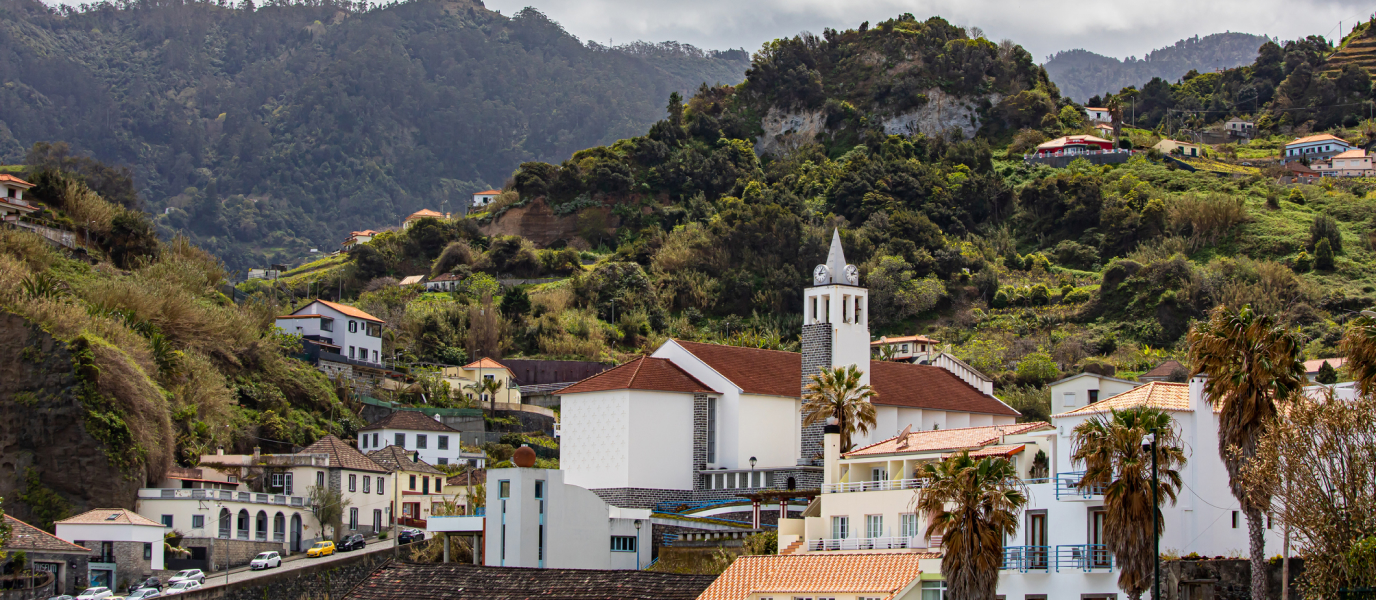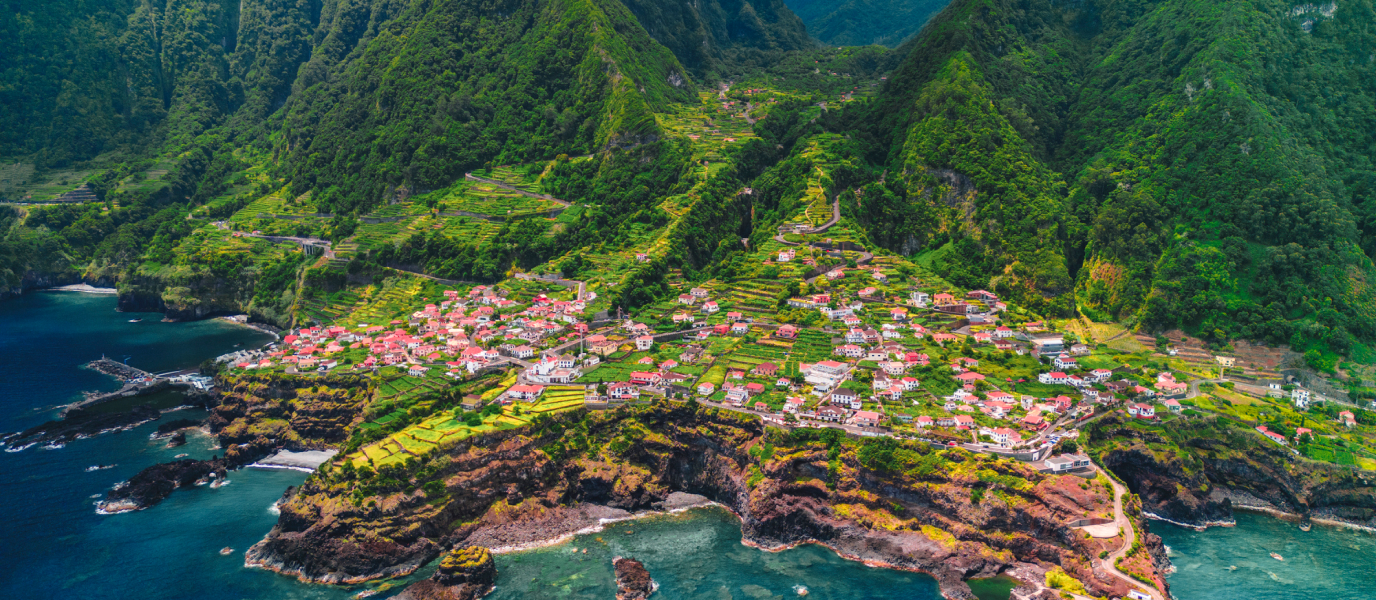Madeira island is full of little corners where the locals seem to have made a pact with the devil to stop time. This is the only way to understand places like Porto da Cruz, where everything seems to have stopped with the sole aim of enjoying the views, the weather, good food and, above all, a good drink.
Great wines are now made on the island and there is a rum with roots in the sugar business that put Porto da Cruz on the map of the largest trading cities in the 16th century.
History of Porto da Cruz
The village is named after an iron cross planted by the Portuguese explorers who arrived at this bay. The village is located 224 metres above sea level and surrounded by sea and mountains, like almost the entire island of Madeira. The cross guided the ships that wanted to dock at this port, which the merchants used for loading and unloading at the time.
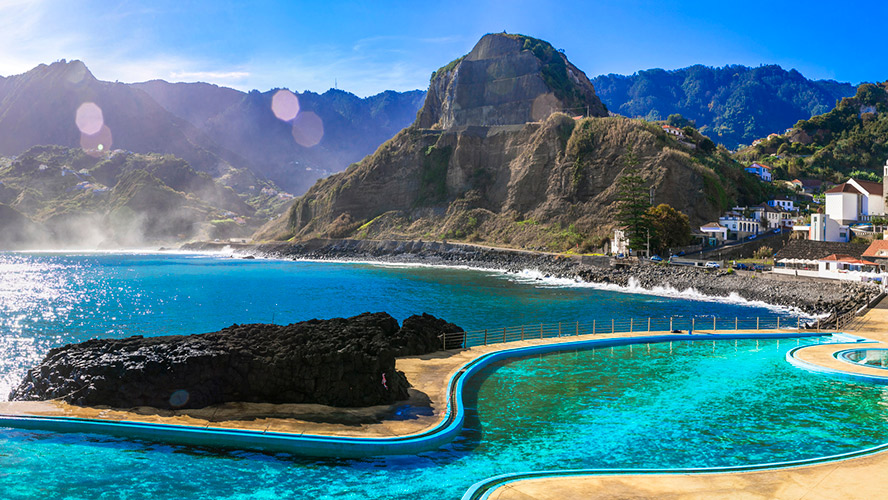
The parish church that served the villages was built in 1577 under the protection of Our Lady of Piety, although it no longer exists. For many years, this small village passed from the hands of Machico Council to Santana Council in a very rugged area where communities forged their own identities.
In fact, you should visit Penha d’Águia, an incredible rock formation that separates Porto da Cruz from Faial and which has breathtaking views.
One of the most interesting things about Porto da Cruz’s past was its role in the sugar cane culture and the so-called white gold that made it a well-known spot in Madeira, the largest sugar exporter in the 16th century.
This activity left a strong mark on the village and its people.
Old quarter and monuments
The white houses, arranged in small zigzagging alleys, are a unique view, full of flowerpots and pink flowers that impregnate the newcomer’s eyes and nose. That is not the only thing you will see in Porto da Cruz: its church, a rocky outcrop and even a sugar mill will mark your visit.
Porto da Cruz fort
Now in ruins, this small headland shows the commercial importance of Porto da Cruz for building it at the end of the 18th century. Some of the grey stonework and window frames are still preserved.

Nossa Senhora de Belém manor house
This is one of the manor houses that belonged to the area’s main sugar-producing families. It was built around 1770 and the truth is that it is not in very good condition. Part of the window overlooking the chapel can still be seen, which preserves a stone altar arch, an altarpiece and some paintings referring to the birth of Jesus Christ. On the floor of the temple, it is interesting to see a tomb with a coat of arms.
Vereda do Larano
Not everything in Porto da Cruz is man-made. This path intersperses the reddish of the volcanic rock, the black of the basalt with the green and blue that marks almost any Madeiran landscape. The views from the cliff are spectacular.
However, if you want to go to the sea, Lagoa beach is perfect for surfers and swimmers and has all the amenities for enjoying the sea.
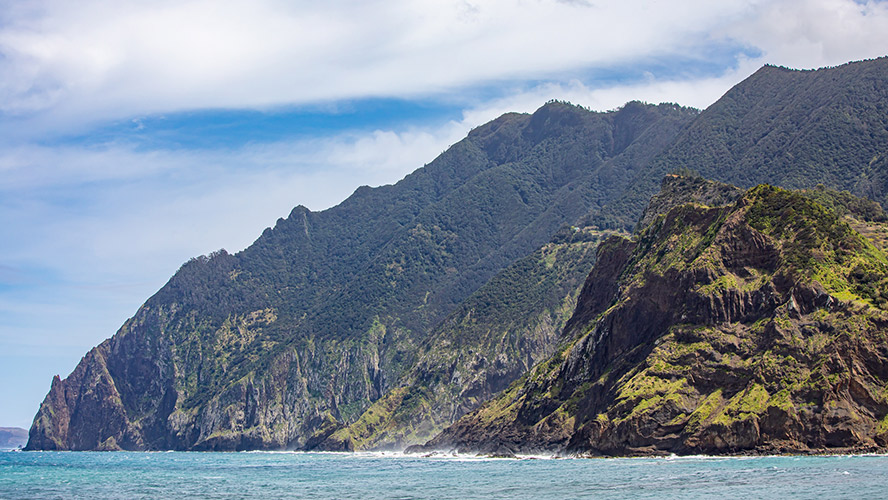
North Mills Distillery
Engenhos do Norte, as it is known locally, is one of the main attractions of Porto da Cruz and is a reminder of the town’s sugar-producing past. The mill, which still works as it did when it was built almost a century ago, also has a 26-metre tower from which the views of the whole island are incredible.
The North Mills Distillery was created to take over the work of the more than 50 sugar mills across the island that were losing momentum. It is the only one in Europe that still works with the same machines as at the beginning of the last century, using steam and wood-fired boilers made in Liverpool.
It is now used for producing honey and rum for, among others, the Branca, Zarco and Rum North brands, which distil some of their most awarded and recognised varieties there. In fact, Madeira is one of the few regions in Europe that can label its distillates as agricultural rum. After visiting the mill, you should visit the tasting room to try these drinks.
Porto da Cruz wines
Although Porto da Cruz is not the island’s main wine-growing area, the locals have been adapting their crops to the new Madeira wines that have become world famous. In this case, the most common variety is American dry wine, which is made from the American grape and is the most typical in Madeiran taverns, although it is not very popular in Europe.
It is drunk, and drunk a lot, at popular festivals such as the one held every September in Porto da Cruz, the great Grape Festival, which brings together the surrounding villages so that everyone can eat and, above all, drink.
The wine business was brought to Madeira by the Portuguese discoverers in the 15th century who soon realised that it was a perfect land for vine cultivation, especially because of the climate.
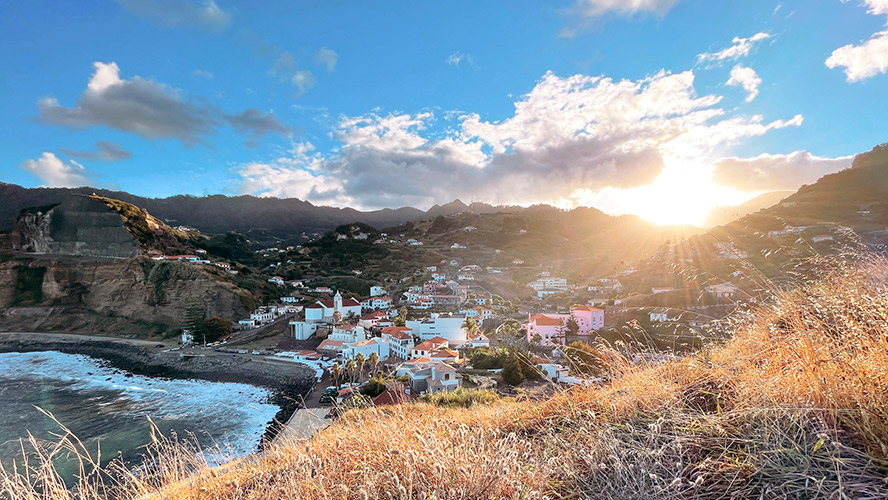
Where to eat near Porto da Cruz
Almost any terrace or bar in the village is a good place to enjoy one of Porto da Cruz’s attractions, i.e. its food and drinks. At Snack Bar A Pipa, for example, you should try the fish and seafood as well as some of its fantastic wines. If you are looking for spectacular mussels in an almost paradisiacal terrace, Vila Bela is the place for you. Praça Velha has one of the most impressive views in the area, in addition to good food.
Where to stay near Porto da Cruz
The best place to stay is in nearby Funchal where there is a larger choice of accommodation. One option is the Allegro Madeira Adults Only, which is completely renovated and has one of the best panoramic views of the ocean very close to the centre of the capital. Its Rooftop Bar 360 is an attraction in itself where you can enjoy fine cocktails and delicious cuisine. It is an elegant hotel, decorated in sea blue and with views of both the city and the Atlantic. However, as the name suggests, it is for adults only.
For families, the five-star Barceló Funchal Oldtown has great views and is located between Funchal Cathedral and Avenida do Mar, one of the city’s main thoroughfares.
Close to the hotel there are many shops and restaurants serving local and international cuisine although, if you do not want to go too far away, the Funchal Oldtown has an exquisite selection of bars and restaurants such as the rooftop restaurant with a swimming pool and sea views. Its healthy breakfast is a must.



























































